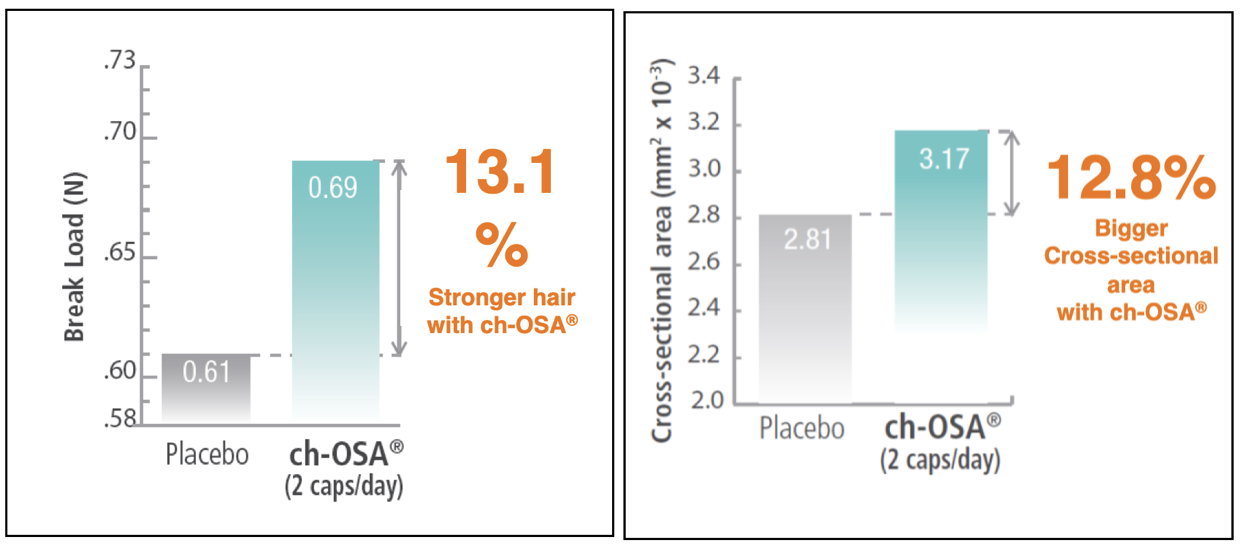Clinical Trials: Hair Quality
This randomized, double-blind, placebo-controlled study of 48 women took place over nine months, and was led by professor Randy Wickett of the University of Cincinnati. It was co-authored by E. Kossmann (Holzminden, Germany), A. Barel and P. Clarys (Vrije Universiteit Brussel, Belgium) and N. Demeester, D. Vanden Berghe, and M. Calomme (University of Antwerp, Belgium). The study was peer-reviewed and published in the journal Archives of Dermatological Research in 2007.
The research aimed to study the effect of ch-OSA® on hair quality, including elasticity, tensile strength and thickness.
What we found
The trial concludes that after six months, daily oral intake of ch-OSA® had a positive effect on tensile strength, including elasticity and break load, and resulted in measurably thicker hair.
Researchers observed a significant increase in hair diameter in the ch-OSA® group, versus no change in the placebo group. They also saw a smaller decrease in break load in the ch-OSA® group versus the placebo group. They noted a decrease in elasticity in both groups, but the change was significantly smaller in the ch-OSA® group.
Summary
Compared to the placebo group, the participants taking ch-OSA® were measured to have:
12.8% thicker hair fiber diameter (thickness)
13.1% higher break load (strength)
7.3% higher elastic gradient (elasticity)
Participants
The participants were 48 Caucasian women with fine hair at least 15cm long; they were between the ages of 18 and 65; with an average age of 43.

Figure 1: The “break load” of hair in women who took ch-OSA® versus a placebo. Break load is the force needed to snap hair fibers.
Figure 2: Hair thickness i.e. cross-sectional area of hair fiber in women who took ch-OSA® versus a placebo.
Conclusion
The study's positive results can be explained by three mechanisms. First, the potential for ch-OSA®'s direct interaction with keratin, which might improve the structural properties of hair fibers. Secondly, since the hair follicle is embedded in a collagen rich matrix, ch-OSA®'s stimulation of collagen production improves the flow of nutrients to the hair follicle, resulting in more keratin formation. Thirdly, increased collagen production in the fibroblasts of the dermal papilla increase the volume of the dermal papilla, resulting in a bigger cross-sectional area of the newly formed hair shaft.